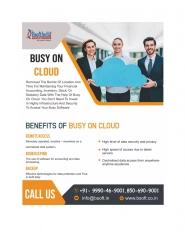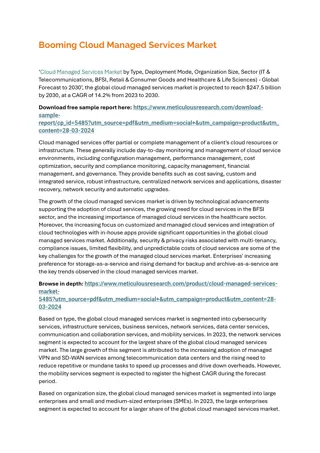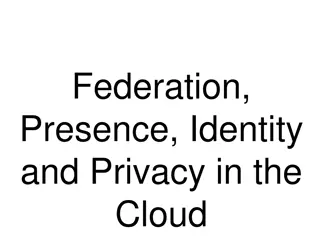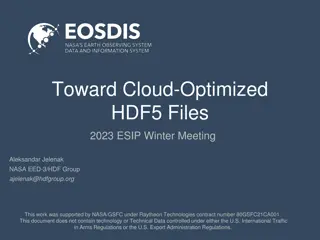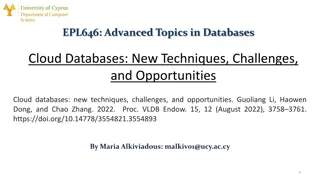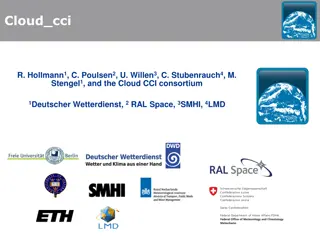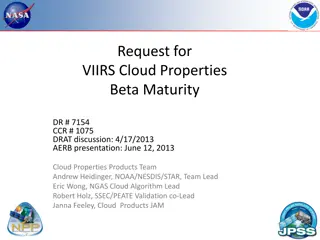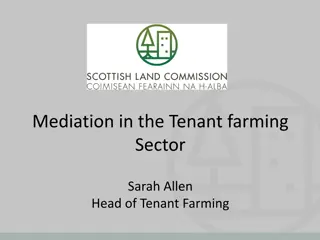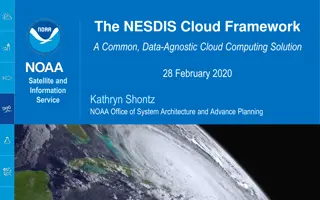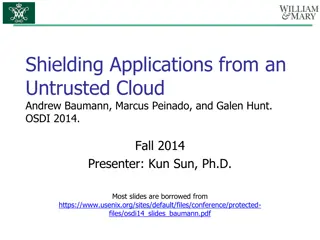State-of-the-Art Multi-Tenant Cloud Data Services
Cloud computing is now mainstream, with major vendors offering cloud databases without the need for server management. Multi-tenancy allows sharing of computing resources, with virtualization technologies ensuring security and isolation. This article delves into challenges and opportunities in the realm of multi-tenant cloud data services, discussing consolidation, virtualization technologies, and the impact on database management.
Download Presentation

Please find below an Image/Link to download the presentation.
The content on the website is provided AS IS for your information and personal use only. It may not be sold, licensed, or shared on other websites without obtaining consent from the author.If you encounter any issues during the download, it is possible that the publisher has removed the file from their server.
You are allowed to download the files provided on this website for personal or commercial use, subject to the condition that they are used lawfully. All files are the property of their respective owners.
The content on the website is provided AS IS for your information and personal use only. It may not be sold, licensed, or shared on other websites without obtaining consent from the author.
E N D
Presentation Transcript
Multi-Tenant Cloud Data Services State-of-the-Art, Challenges and Opportunities Erotokritos Erotokritou
Introduction Cloud computing has become mainstream. Major vendors such as Alibaba Cloud, Amazon Web Services (AWS), Google Cloud Platform, IBM Cloud, Microsoft Azure, and Oracle Cloud provide cloud databases Customers do not need to manage a server. Service provider is responsible for managing hardware, virtual machines (VMs), and storage, high availability disaster recovery, automated backups. Classes of database: Relational online transaction processing (OLTP), Nosql, Data analytics services .
Multi-Tenancy Customers/databases share computing resources of the cloud provider (CPU, memory, disks) Consolidation: The number of databases hosted on a single server or cluster. The higher the degree of consolidation, the greater the reduction in cost by providers. Use of virtualization technology for isolation and security(VMs, OS Process-Groups, Containers, DBMS Instances)
Virtualization technologies Virtual machine: enables multiple operating systems to run on a single physical machine. (+) Strong isolation => If one VM is compromised or crashes the operating system. applications running on other VMs are not affected. (-) Each VM contains its own copy of the OS => a large fixed memory overhead Operating System Process-Group (CGroups in Linux, Job Objects in Windows): Share OS. Each tenant runs their database(s) in a separate DBMS process. Containers(Docker): similar to process-groups, but the main difference is that the file system and namespaces of each containers is isolated
Virtualization technologies DBMS Instance: Users of one database cannot access data belonging to a different database. Security isolation is weaker but better but greater degree of consolidation. Database: all tenant databases share the same tables and queries. Best consolidation and weakest isolation. Query optimization can become more challenging due to lack of fine-grained statistics for the data of each tenant
Virtualization technologies Degree of consolidation: Virtualization technologies which are higher in stack can support more database in a single server Degree of isolation: The lower down in the stack the virtualization logic is supported, the greater the security and performance isolation achievable across tenants Ease of provisioning: The time taken to create a new database or upsize/downsize resource limits for a database. Simpler in logical virtualization technology implemented higher up in the stack. Impact of failures(unplanned hardware failure or planned for updates): Depending on the virtualization technology used, a single failure may affect only one tenant or many tenants
Quality of service Availability: Providers promise 99.9% availability. (the fraction of time the service is available). If the agreement is not met, they refund a portion of the bill. Performance: Video games require low latency high throughput. Service level agreement(SLA): Providers do not guarantee high QoS to all customers to avoid unutilized resources. They sell cheaper services with low or no QoS.
Pricing model Automatically acquiring and releasing resources on-demand. Customers are billed only for power they consume.
Resource management In a data center, servers are grouped into clusters that function as a single unit and include multiple nodes or machines. Effective management of resources within these clusters is crucial to achieve high availability, good performance, scalability, and efficiency in a multi-tenant cloud data service. Infrastructure components: cluster manager and node-level resource governor When multiple databases execute and share resources like CPU, I/O, and memory on a single node, it's essential to avoid noisy neighbor problems that could negatively impact performance and service-level objectives.
Cluster manager The cluster manager is responsible for managing the collection of nodes in the cluster (Kubernetes, Service Fabric) When a query or job is executed, decisions need to be made regarding the number of nodes on which to execute the query and the amount of resources required. The cluster manager must then acquire the necessary resources. Move or migrate a database to another node in cluster. (hardware issues, not enough resources are available)
Disaggregation Memory disaggregation decouples memory from compute servers and enables applications to access both local and remote memories. Can memory disaggregation bring cost and scale benefits? Functional disaggregation. Multi-tenant metadata, logging, caching services can be in a separate cluster which is the query processing service. Studying the benefits of such functional disaggregation for cloud data services has the potential to influence future architectures.
Caching Compute tier and the storage tier are separated Disaggregation degrades the performance (Latency) Cloud data services resort to aggressive caching strategies to regain performance Caching reduce user experience(cold restarts)
Auto-tuning Auto-tuning databases work by analyzing the workload of the database and the system resources available. Machine learning algorithms are used to identify patterns in the workload and system performance and to make recommendations that can improve performance. Adjust a wide range of parameters, such as memory allocation, buffer sizes, query optimization, and indexing.
Hardware Data centers have news hardwares such as RDMA, GPU, FPGA, SSD NVRAM witch can cause disruptions and acceleration. RDMA: access memory of another device directly. GPU and FPGAs are able to offload expensive computation from the CPU such as compression/decompression, data shuffle, and visual analytics How databases can most effectively exploit the new hardware innovations? Is an open problem


